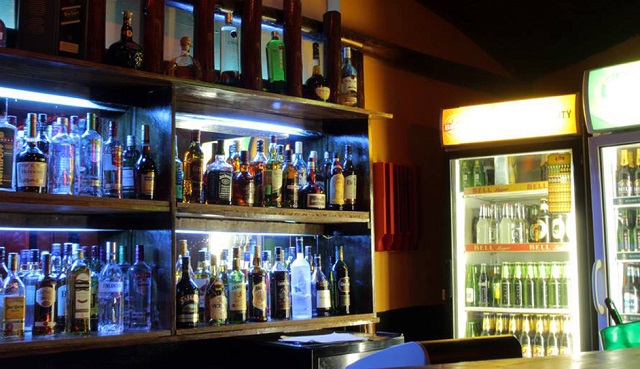
Study finds high rates in Bwaise, Kamwokya
Kampala, Uganda | MUBATSI ASINJA HABATI | A new study by medical researchers from Makerere University and Mulago Hospital has found that the prevalence of HIV and TB in Kampala slum bars was 11.4% which is twice and four times the national averages respectively.
Uganda is one of the 30-high burden TB/HIV countries in the world. According to the Ministry of Health, HIV prevalence in Uganda is 6.8% for women, 4.2% for men, 2.8% among young women, and 1.1% among young men.
According to findings of a study by the Ministry of Health together with the World Health Organisation (WHO) and Global Fund, released in 2017 TB prevalence in Uganda is 253 per 100,000 people, compared to 159 per 100,000 in 2015.
This latest study says slum bars and social alcohol drinking groups are avenues for TB transmission to bar customers, employees and neighbours, and they propagate outbreaks.
The aim of this study was to determine the prevalence of HIV and tuberculosis and predictors of HIV infection among individuals found at bars in Kampala slums in Uganda.
The study findings highlight the need for concurrent programmes aimed at screening for both HIV and TB among high risk populations in slums.
In 2018, HIV contributed 251,000 of the 1.2 million TB deaths while TB was the leading cause of death among HIV positive individuals in Uganda.
According to the study slum dwellers are less likely to utilise health services for HIV and TB diagnosis and have a low level of knowledge regarding prevention strategies for either disease. The low utilisation is partly attributed to the perceived poor quality of services at public facilities and thus high risk groups are not covered by facility based screening strategies.
Within slum settlements, bars and social drinking places carry the highest risk for TB transmission than other social gathering places such as churches, clinics, hospitals, taxis, community halls, schools, and supermarkets. In addition, alcohol consumption is an established risk factor for tuberculosis in a dose dependent fashion, and exacerbates TB infection by blunting CD4 and CD8 T-lymphocyte cellular responses.
Similarly, there is a high prevalence of HIV in areas that have a high density of bars. It is likely that the prevalence of HIV among bar customers, employees and neighbours of bars in slums is high due to the high risk sexual behaviour, low risk perception of sex with commercial sex workers and inconsistent condom use observed among individuals at bars in slums.
According to the study, the prevalence of HIV and TB among individuals found at bars in slum settings is not widely reported because studies in this setting have focused on each disease in isolation.
Some 272 participants from 42 bars in five slums were interviewed for this study, of whom 170 (62.5%) were bar customers, 30 (11.0%) were bar owners, 30 (11.0%) were bar staff while 42 (15.4%) were merely found at the premises. Fourteen (5.2%), 58 (21.3%), 65 (23.9%), 71 (26.1%) and 62 (22.8%) participants were from Kamwokya, Bwaise, Nalukolongo, Kibuli and Naguru Go-down slum settlements respectively. Up to 251 (92.3%) participants were residents of the slum settlement and 196 (72.1%) were males. The study participants were aged between 27 and 38) years. They went to bars between 3 to 7 days a week.
The prevalence of HIV was 11.4% and 5.8% individuals were newly diagnosed with HIV. The prevalence of HIV among participants was statistically different across the slum settlements; 25.9% from Bwaise, 21.4% Kamwokya, 9.2% in Nalukolongo, 7.0% in Kibuli and 3.2% in Naguru Go-down. Among the study participants, 82.7% had ever tested for HIV. Of these, 6.4% reported to be known HIV positive patients. Among those that self-reported to be HIV positive, 93.3% were experienced on antiretroviral therapy (ART) while 40.0% reported to be taking cotrimoxazole prophylaxis. The proportion of HIV positive participants was higher among those who had never tested for HIV than those who had ever tested.
While much attention has been given to preventing Covid-19 pandemic, this study underscores the need for striking a balance in creating awareness among the population of the other diseases in society.
A similar study done in Botswana found the prevalence of HIV among bar patrons to be 12.7% in the capital Gaborone and 19% of first time testers were HIV positive. In Tanzania, the prevalence of HIV was 19.0% among female bar and hotel workers. This is comparable to Uganda’s finding of 19.7% among females.
The prevalence of HIV is known to be higher among women than men in sub-Saharan Africa owing to different responses to socio-demographic risk factors, sexual behaviours, and HIV/AIDS awareness.
Dr. Joseph Baluku, a lead author of this study, says “we suspect that the high HIV risk observed among women found at bars in our study is attributed to commercial sex work engaged in by women at bars in Kampala slums. Moreover, the high prevalence of HIV observed in Bwaise slum is consistent with a higher density of female commercial sex workers and men who have sex with men observed in Kawempe division of Kampala.”
****
 The Independent Uganda: You get the Truth we Pay the Price
The Independent Uganda: You get the Truth we Pay the Price



